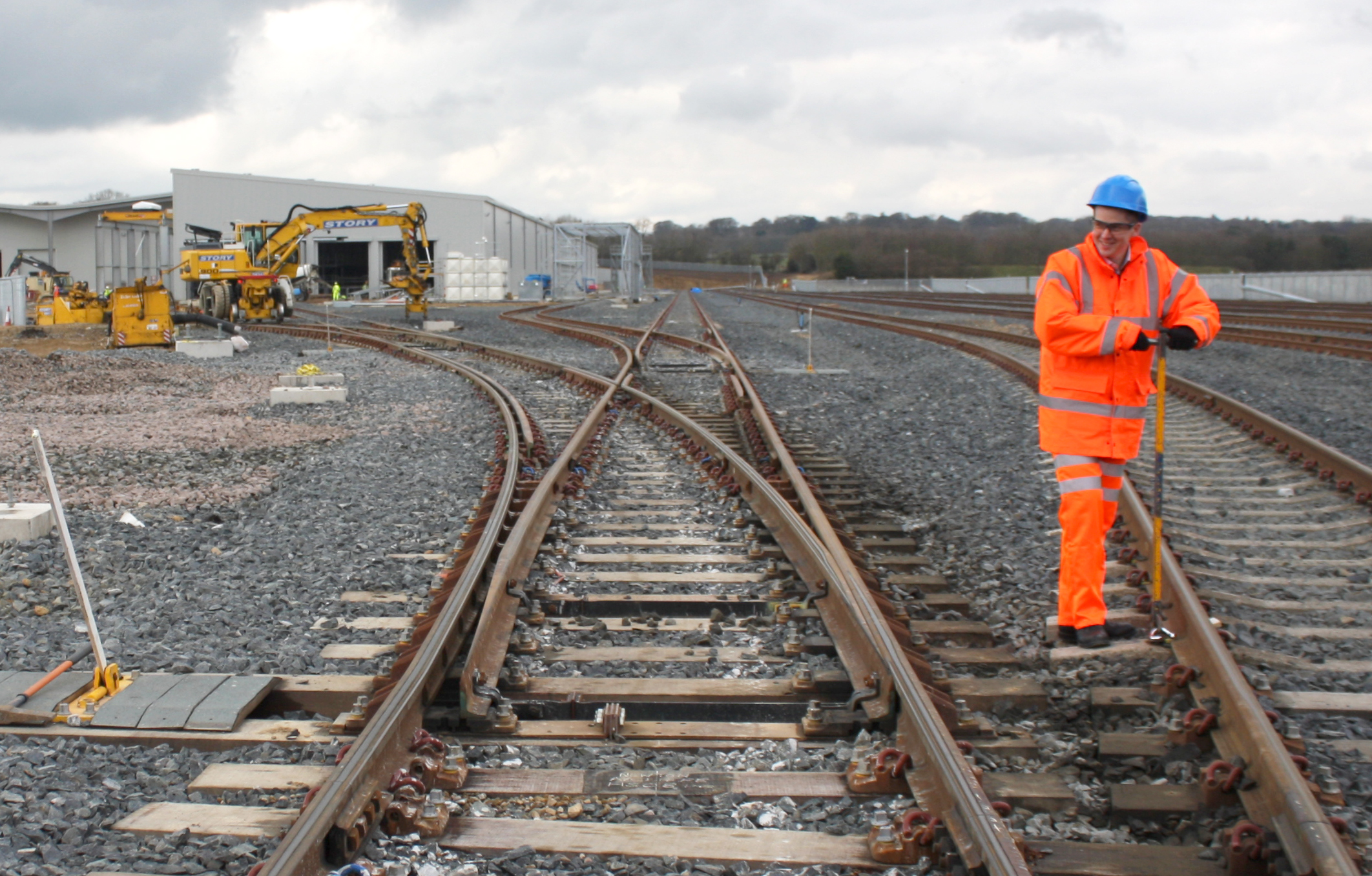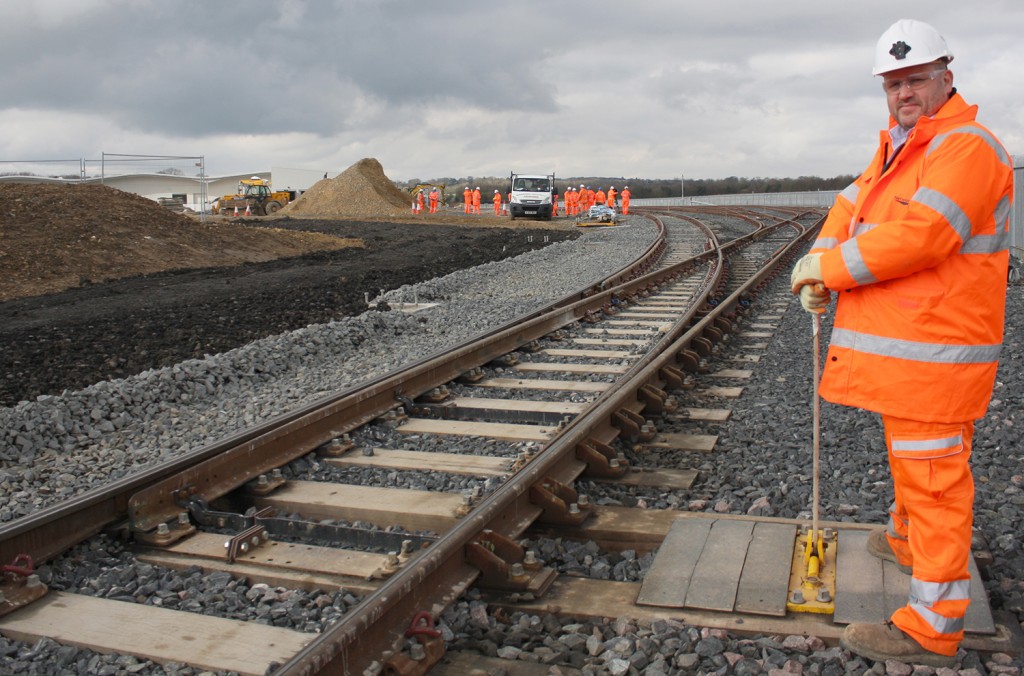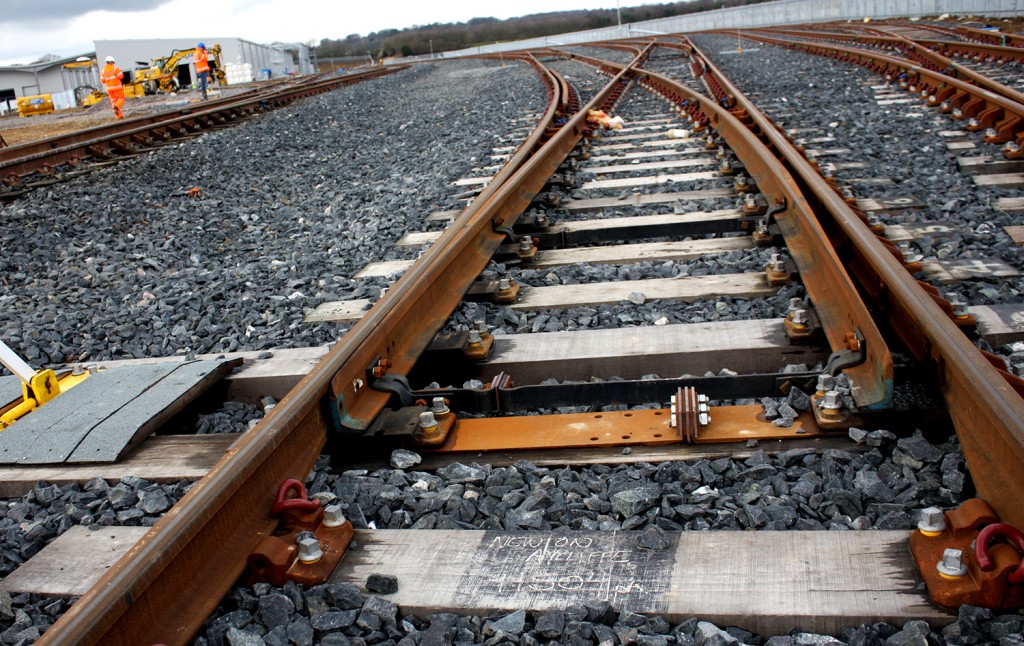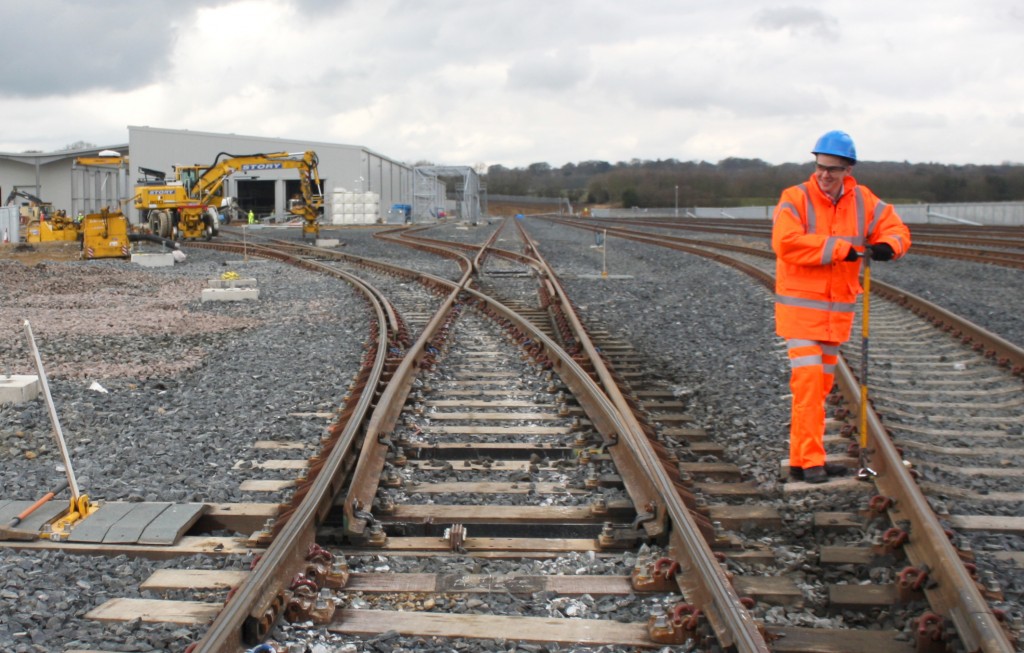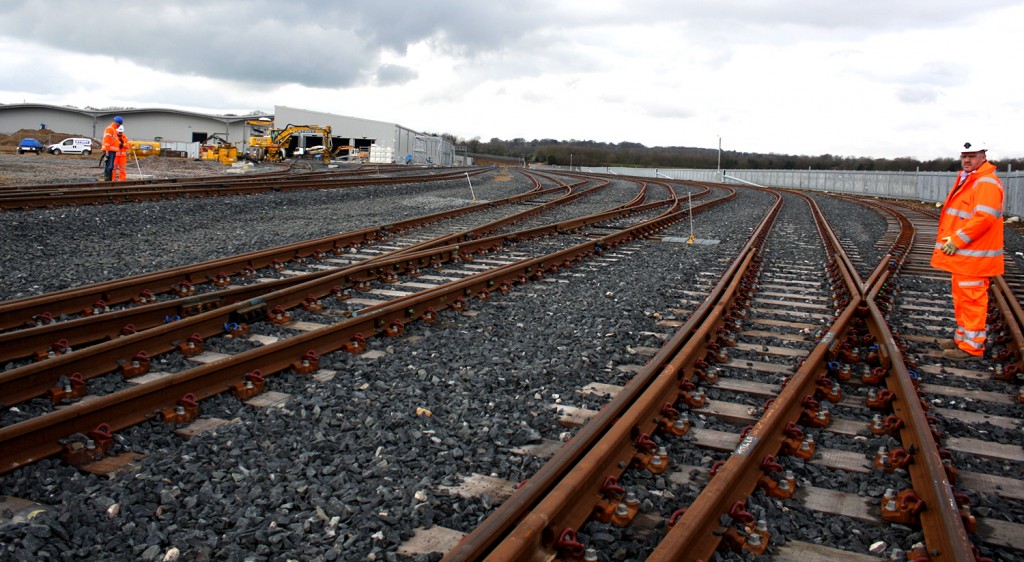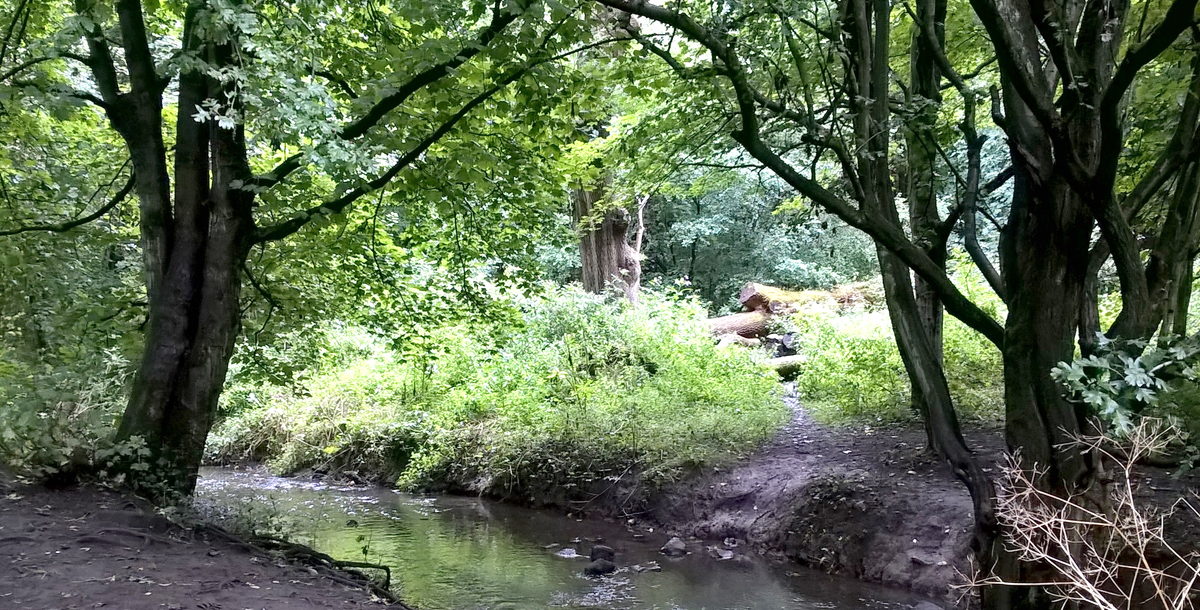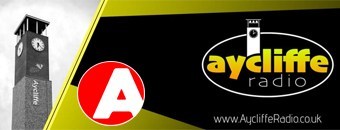The final railway track component was installed on Wednesday 25th March, connecting the factory with the rail network. Network Rail, Hitachi and Story Contracting installed the last Pandrol Clip at the £82 million Newton Aycliffe site which will deliver the next generation of high speed rail carriages to the UK and Europe.
The project has seen the installation of 7,000 metres of sidings and a new 1km long overhead electrified test track, along with the reconfiguration of the existing branch line and its connection to the site. Expected to be completed by mid-2015, work will now concentrate on the interior fit-out of the facility, which has already started.
Phil Verster, Route Managing Director, Network Rail said: “Today’s final fixing signals an important milestone in this exciting project. The Intercity Express Train will bring a step-change for passengers, enabling more and faster journeys. This facility is an achievement in itself and will continue to bring economic benefits to the north east as well as maintaining the region’s proud rail heritage.
“I would like to thank Merchant Place Developments, Story Contracting and the many suppliers for all the hard work they’ve put in to reach this stage. Work to finish the signalling and power will complete later this year.”
Once completed, the facility will serve as a Hitachi Rail Europe facility for train manufacturing and assembly. It will be the base for the construction of the new Great Western Main Line and East Coast Main Line trains the company is building for the Government’s Intercity Express Programme (IEP), as well as the new AT200 trains for Abellio’s ScotRail franchise.
Rail Minister Claire Perry said: “We are investing record amounts in our railways as part of our long-term economic plan. Connecting the Hitachi train facility at Newton Aycliffe to the track is a key step in roll out of the InterCity Express programme, which will create hundreds of jobs locally and thousands more across the UK supply chain.
“The trains made here will transform passengers’ journeys in the south west and north, with more seats on each train, more services, reduced journey times and improved reliability.”
Rail Track Connection to Hitachi Factory
